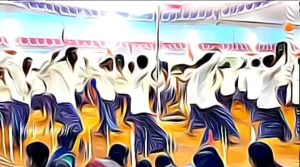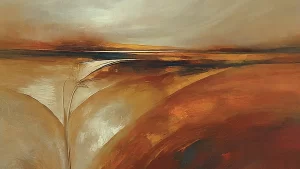
കുമാരനാശാൻ, Poems of Kumaranasan
Malayalam Content of the same is published here
N. Kumaran Asan (1873-1924) also known as Mahakavi Kumaran Asan, the name prefix Mahakavi (Awarded by Madras University in the Year 1922) meaning great poet and the suffix Asan meaning scholar or teacher) was a Malayalam poet, philosopher and social reformer.
Kumaran Asan initiated a revolution in Malayalam poetry in the first quarter of the 20th century, transforming it from the metaphysical to the lyrical and his poetry is characterized by its moral and spiritual content, poetic concentration and dramatic contextualization. Kumaran Asan was one of the famous triumvirate poets of Kerala along with Vallathol Narayana Menon and Ulloor S. Parameswara Iyer in the first half of the 20th century and a disciple of Sree Narayana Guru.
Kumaran Asan was born in a merchant family belonging to the Ezhava community in April 1873 in Kayikkara village, Chirayinkeezhu taluk, north of Thiruvananthapuram district of Kerala, south India. Named Kumaran, he was the second son in a family of nine children. His father, Narayanan Perungudi, was well versed in Malayalam and Tamil. His mother, Kaali. Asan inherited his taste for Kathakali and classical music. Kumaru trained in mathematics and Sanskrit for which he had a passion. Even though through his father’s efforts, he got a job as a primary school teacher and an accountant to a wholesaler at the age of 14, he quit the job two years later to pursue higher studies in Sanskrit. He undertook a studentship in poetry under Manamboor Govindan Asan. He wished to learn Yoga and Tantra and worked as an apprentice in a Muruga temple at Vakkom. He composed a few devotional songs for the benefit of regular worshipers at this temple. In 1890, he met Sree Narayana Guru and became the spiritual leader’s disciple.
In 1917 Asan married Bhanumathiamma, the daughter of Thachakudy Kumaran – younger brother of Padmanabhan Palpu’s father. . Bhanumathiamma, who was an active social worker, later remarried after Asan’s death and died in 1975.
Kumaran Asan and Sree Narayana Guru
Kumaran was dogged by ill-health all through his early life. When he was eighteen, Sree Narayana Guru visited his house at the request of his father. Kumaran was bedridden at that time. The great saint suggested that Kumaran should stay with him and become his disciple. The little boy found the invitation irresistible. Thus began a new phase of life for the young lad.
Swamy took the fledgling devotee under his care and in 1895 Kumaran was sent to Bangalore for 3 years for higher studies in Sanskrit, at the Sree Chamarajendra Sanskrit College. He specialized in Tarka sastra. He could not take the final exam. Leaving Bangalore he came to Madras and after a brief stay, left for Calcutta to join the Sanskrit College(Central Hindu College). His teacher was Mahamahopadhyaya Kamakhya Nath who encouraged the poetic gift of his student and prophesied that he would one day become a famous poet. But his stay was again cut short due to plague epidemic. He returned to Aruvippuram in 1900.
Asan was also involved with the activities of the Sree Narayana Dharma Paripalana Yogam (SNDP) and became its secretary in 1904. The same year, he founded Vivekodayam, a literary journal in Malayalam, and assumed its editorship. Under his leadership, the magazine became a monthly from a bi-monthly. In 1913, he was elected to the Sree Moolam Popular Assembly (Sri Moolam Praja Sabha), the first popularly elected legislature in the history of India. He relinquished the position at SNDP in 1919 and a year later, took over the editorship of Pratibha, another literary magazine In 1921, he started a clay tile factory, Union Tile Works, in Aluva but when it was found that the factory was polluting the nearby palace pond, he shifted the project to a site near Aluva river and handed over the land to SNDP for building an Advaitashramam. Later, he moved to Thonnakkal, a village in the periphery of Thiruvananthapuram, where he settled with his wife. In 1923, he contested in assembly election from Quilon constituency but lost to Sankara Menon.

Kumaranasan 
Ulloor S. Parameswara Iyer 
Vallathol Narayana Menon
Veena Poovu (The Fallen Flower) – 1907
Asan scripted this epoch-making poem in 1907 during his sojourn in Jain Medu, Palakkad. The poem is considered the beginning of a new era in Malayalam literature, and is one of Asan’s most significant works. A highly philosophical poem(Composed of forty-one stanzas), ‘Veena Poovu‘ is an allegory of the transience of the mortal world, which is depicted through the description of the varied stages in the life of a flower. Asan describes in such detail about its probable past and the position it held. It is an intense sarcasm on people on high powers/positions finally losing all those. The first word Ha, and the last word Kashtam of the entire poem is often considered as a symbolism of him calling the world outside Ha! kashtam (How pitiful).
Nalini (Subtitle: Allengkil Oru Sneham)
Kumaranasan’s Nalini is timeless classic, celebrating all the imperfections and weakness of human conditions, and the immortal and ineffable beauty of the lives of us mere mortals. A masterpiece, of love and suffering.
നല്ലഹൈമവതഭൂവിൽ,ഏറെയായ്
കൊല്ലംഅങ്ങൊരു വിഭാതവേളയിൽ
ഉല്ലസിച്ചു യുവയോഗിയേകനുൽ
ഫുല്ല ബാലരവിപോലെ കാന്തിമാൻ.
Leela – 1914
A deep love story in which Leela leaves madanan, her lover and returns to find him in forest in a pathetic condition. She thus realizes the fundamental fact ‘Mamsanibhadamalla ragam’ (Love is not an artifact of flesh)

Prarodanam (Lamentation) 1919
An elegy on the death of A. R. Rajaraja Varma, a poet, critic and scholar; similar to Percy Bysshe Shelley’s Adonaïs, with a distinctly Indian philosophical attitude.

Chinthavishtayaaya Sita (Reflective Sita) 1919
An exploration of womanhood and sorrow, based on the plight of Sita of Ramayana.
സുതര് മാമുനിയോടയോദ്ധ്യയില്
ഗതരായോരളവന്നൊരന്തിയില്
അതിചിന്ത വഹിച്ചു സീത പോയ്
സ്ഥിതി ചെയ്താളുടജാന്തവാടിയില്.
A love story depicting the relationship between Savithri, a Namboothiri heiress and Chathan, a youth from a lower caste. A political commentary on 19th and early 20th century Kerala.
മുമ്പോട്ടു കാലം കടന്നുപോയീടാതെ
മുമ്പേ സ്മൃതികളാൽ കോട്ട കെട്ടി
വമ്പാർന്നനാചാരമണ്ഡച്ഛത്രരായ്
നമ്പൂരാർ വാണരുളുന്ന നാട്ടിൽ,
Read More
This poem, divided into four parts and consisting of couplets, describes an untouchable beggar-woman” (also the name of the poem) who approaches Lord Ananda near Sravasti.
ഓതിനാൻ ഭിക്ഷുവേറ്റം വിലക്ഷനായ്
“ജാതി ചോദിക്കുന്നില്ല ഞാൻ സോദരി,
ചോദിക്കുന്നു നീർ നാവുവരണ്ടഹോ!
ഭീതിവേണ്ടാ; തരികതെനിക്കു നീ”
The story of Vasavadatta, a devadasi, and Upagupta, a Buddhist monk. Tells the story of sensory attraction and its aftermath.അനുപമകൃപാനിധി, യഖിലബാന്ധവൻ ശാക്യ-
ജിനദേവൻ, ധർമ്മരശ്മി ചൊരിയും നാളിൽ,
ഉത്തരമഥുരാപുരിക്കുത്തരോപാന്തത്തിലുള്ള
വിസ്തൃതരാജവീഥിതൻ കിഴക്കരികിൽ,
Baalaraamaayanam 1917-1921
This is a shorter epic poem consisting of 267 verses in three volumes. Most of these verses are couplets, with the exception of the last three quatrains viz. Balakandam (1917), Ayodhyakandam (1920) and Ayodhyakandam (1921).

പൂക്കുന്നിതാ മുല്ല, പൂക്കുന്നിലഞ്ഞി
പൂക്കുന്നു തേന്മാവു, പൂക്കുന്നശോകം
വായ്ക്കുന്നു വേലിക്കു വര്ണ്ണങ്ങള്, പൂവാല്
ചോക്കുന്നു കാടന്തിമേഘങ്ങള്പോലെ.
എല്ലാടവും പുഷ്പഗന്ധം പരത്തി
മെല്ലെന്നു തെക്കുന്നു വീശുന്നു വായു,
ഉല്ലാസമീ നീണ്ട കൂകൂരവത്താ-
ലെല്ലാര്ക്കുമേകുന്നിതേ കോകിലങ്ങള്.

Reference : Wiki and other google searches
























1 thought on “Kumaran Asan”